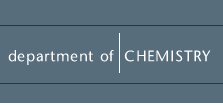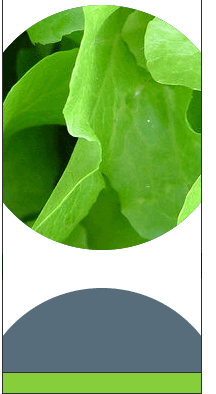




Basic Organic ChemistryExams Sample Final ExamOrganic Chemistry : Chemistry 163 - 263 — — (Answers in RED) SAMPLE FINAL - Dr. John C. Vederas I. Structure and Nomenclature - 91 Points - A. Draw structures for which names are given, or name the given structures by any correct (systematic or common) nomenclature. Be sure to give cis or trans (or if appropriate Z or E) or R or S assignment to the isomer where indicated by asterisks (***). (4 points each - 60 points total) 1. pyridine (commonly used as base or solvent)
4. urea 5. valeryl chloride
6. D-glucose (open chain form) (use part structure below in your drawing to assist grading)
if you make an error, redraw part structure
(3R),(4E)-3-chloro-4-hexenoyl chloride
8. calcium propionate (a food preservative)
**** 9. pheromone from moths
cis-7-dodecenyl acetate or cis-7-dodecenyl ethanoate
**** 10. an addictive street drug
(2R)-1-phenyl-2-aminopropane (amphetamine)
**** 11. substance in hooves of South African antelopes used for social recognition
12. a pheromone that induces interspecies mating of male cotton
bollworms with female tobacco worms thereby killing both ( a
C16 compound ) cis-11-hexadecen-1-ol
13. biological precursor for inflammatory substances ( a C20 compound ) or arachidonic acid
14. induces flowering in fruit trees
****15. (R)-1-cyclopentyl-2-(N-methylamino)propane a nasal decongestant (use part structure to assist grading - if you make an error redraw part structure)
B. Determine whether the following pairs of structures are identical (i.e. different pictures of the same molecule), structural isomers, diastereomers, or enantiomers. (2 points each - 8 pts total). 1.
3.
4.
C. Lactose, also known as milk sugar, comprises about 7 % of
human milk. Examine its structure and answer the questions which
follow. ( 10 pts + 6 pts = 16 pts total ) 1. The number of carbons in lactose is: 12 2. The number of hydrogens in lactose is: 22 3. The number of stereogenic centres in lactose is: 10 4. The total number of acetal and hemiacetal carbons in lactose is: 2 5. The number of non-hydrogen equatorial substituents (bonds) in lactose is: 9
(1 pt each - 6 pts total)
II. Physical Properties and Definitions - 62 Points A. Examine the compounds 1-15 in the group below and answer
the questions which follow. Be sure to write your answer clearly.
(13 points - 8 pts + 5 pts) 1. In the group of compounds 1-5 only, the most acidic compound is number 4 2. In the group of compounds 6-10 only, the most acidic compound is number 8 3. In the group of compounds 11-15 only, the most volatile (lowest boiling point) is number 12 4. In the entire group 1-15 inclusive, the most basic compound is number 3 5. Indicate whether the following statements are true (T) or false (F) (1 pt each - 5 pts total) a. Compounds 3, 4, 8, 11, and 15 are miscible (completely soluble) with water True
B. A number of terms are given below with an identifying letter directly underneath. Make the best match of these terms with the short statements which follow by putting the correct letter on the line provided after the statement. Use each letter no more than once. (24 Points total - 2 pts each)
2. Diels Alder I 3. Ylides S 4. Reductions M 5. Carbocation Intermediates A 6. Structural Isomers L 7. Nitrogen Compounds J 8. Enantiomer Mixture D 9. Azo Compounds C 10. Alkyl Anions U 11. Walden Inversions F 12. Ozonolyses Q
C. It would be predicted that one of the two phenolate anions
shown below would form more readily and be more stable. Circle
the more stable structure (1 pt) and draw the extra resonance
form which accounts for this behaviour by completing the partially
drawn structure on the right. (4 points total) — —
III. Reactions - 84 Points A. Show the structure of the major organic product of each of
the following reactions. Show stereochemistry where indicated
by asterisks (***).
B. A number of reagents are given below with an identifying letter directly underneath. Examine the transformations which follow and print carefully the correct letter for the best reagent on the line provided after the reaction. You may need to use a particular reagent letter more than once, but put only one letter per line. (27 pts)
1.
2.
3.
4.
5.
6.
7.
8.
9.
C. Warfarin is a commercial rat poison which works by preventing
blood clotting through interference with Vitamin K metabolism,
thereby causing the animals to bleed to death. The synthesis
of warfarin from a well known drug is shown below. The last step
involves base-catalyzed (pyridine) Michael condensation of an
alpha,beta-unsaturated ketone. Put the correct structure of this
ketone in the space under number 5 below. Print the correct letter
for the best reagent on the line next to the number of its reaction
given below the scheme. Be sure that you put the letters in the
correct location. (15 points total - 3 pts each)
1. G D. Treatment of stearolic acid ( C18H32O2 ) with ozone and then zinc gives two compounds: compound A ( C9H18O2 ) and compound B ( C9H16O4). Oxidation of nonanal with H2CrO4 (or with KMnO4) also produces A. Heating of cyclononene with hot KMnO4 gives B. What are the structures of stearolic acid, compound A, and compound B? (4 pts each - 12 pts total)
IV. Synthesis - 23 Points Total A. Devise a synthesis of 5-methyl-5-propylbarbituric acid (a sleep-inducing barbituate) from carisoprodol, a powerful muscle relaxant. (12 points)
B. Pantothenic acid (Vitamin B3) is an essential nutrient. Part of its chemical synthesis is outlined below. Supply the missing reagents and products and answer the questions below the scheme. ( 18 points ) Hint: Examine each structure in terms of negative and positive sites and try to attach the missing atoms necessary for the products by using stable molecules with appropriate charge distribution. Provide the structures of 1 through 4: ( 3 pts each - 12 points )
b. Name all functional groups in the cyclic material as specifically as you can. ( 2 pts ) Lactone (Cyclic Ester), Alcohol c. Name the functional group with the triply bonded nitrogen ( 2 pts ) Cyano or Nitrile or Cyanide
V. Mechanism - 33 Points TotalFour mechanisms for the hydrolysis of an ester are depicted
below. They may be reasonable or unreasonable; in some cases
whether the mechanism is correct may depend on the reaction conditions.
Examine the possibilities carefully and answer the questions
which follow by placing the correct letters in the boxes. (18
pts ) 3 points each - Letter(s) of Answer(s): 1. The best mechanism for hydrolysis of a methyl ester at pH 10 would be: B 2. The best mechanism for hydrolysis of a methyl ester at pH 1 would be: C 3. The letter(s) of mechanism(s) which may be correct sometimes are (put E if all are incorrect): B and C 4. The letter(s) of mechanism(s) which can never be correct are (put E if all are correct): A and D 5. Hydrolysis of an ester at pH 1 is easily reversible by adjustment of water concentration (T or F) : True 6. Hydrolysis of an ester at pH 10 is easily reversible by adjustment of water concentration (T or F) : False
A mechanism for an electrophilic aromatic substitution reaction is shown below, but it is missing charges and the arrows showing the movement of electrons. Put in the correct charges on the appropriate atoms and used curved arrows to indicate movement of electrons. 15 points )
— — Sample Exams From Professor E. Blackburn's Sections
|
||||||||||||||||||||||||||||||||||||||||||||||||||||||||||||||||||||||||||||||||||||||||||||||||||||||||||||||||||||||||
| intro organic | intro organic labs | library | registrar | student's union |














 enantiomers
enantiomers diastereomers
diastereomers structural isomers
structural isomers identical
identical identical
identical
























